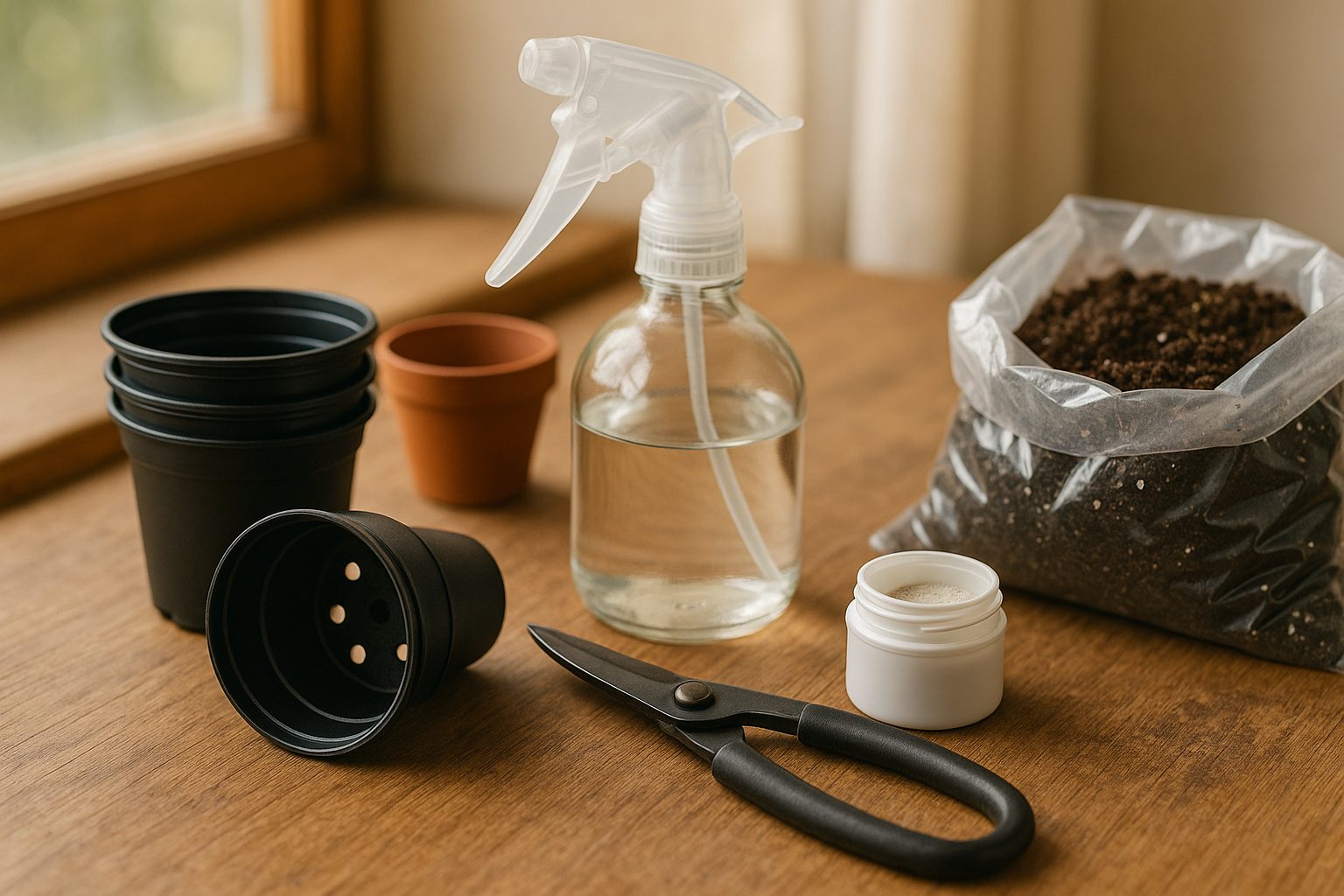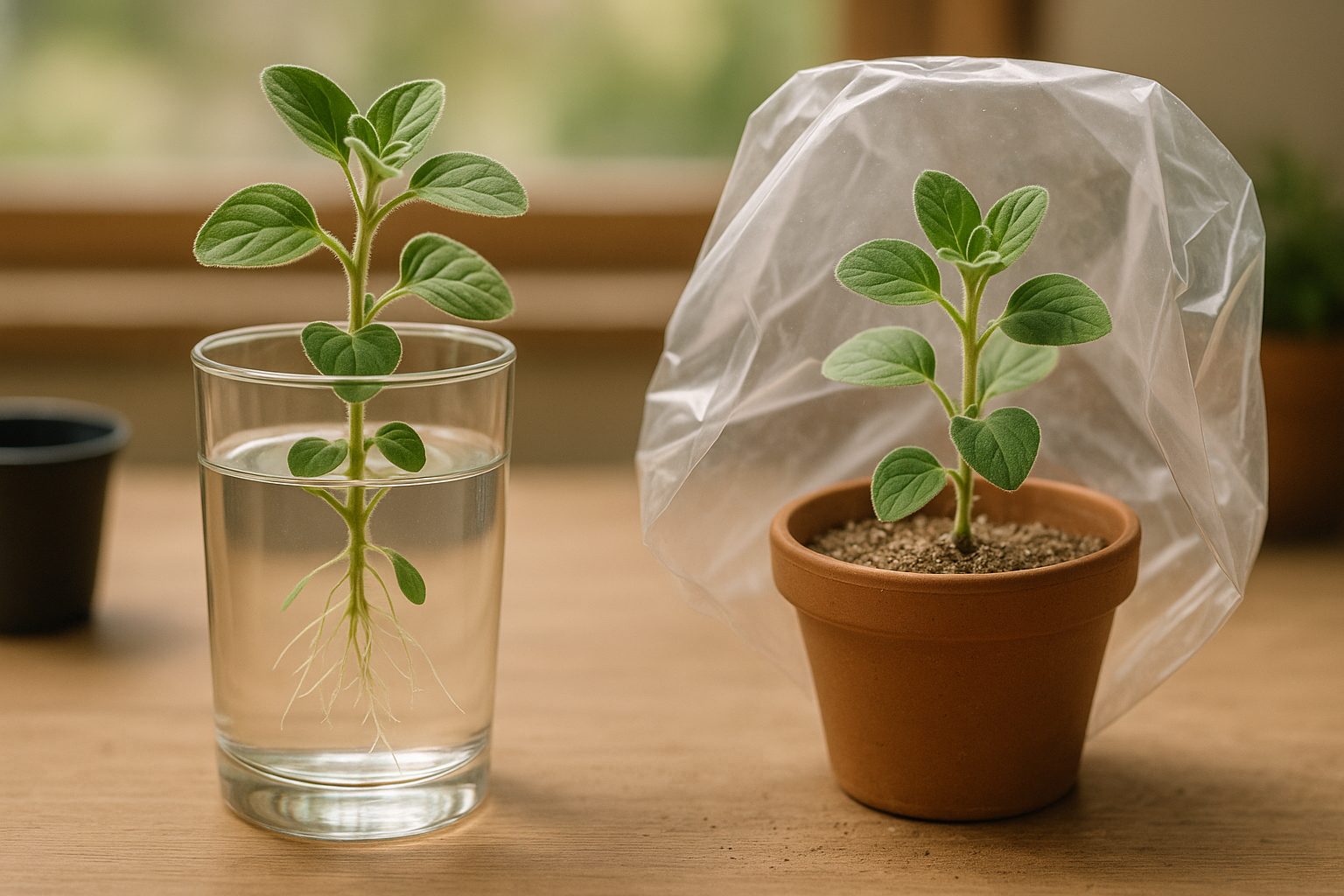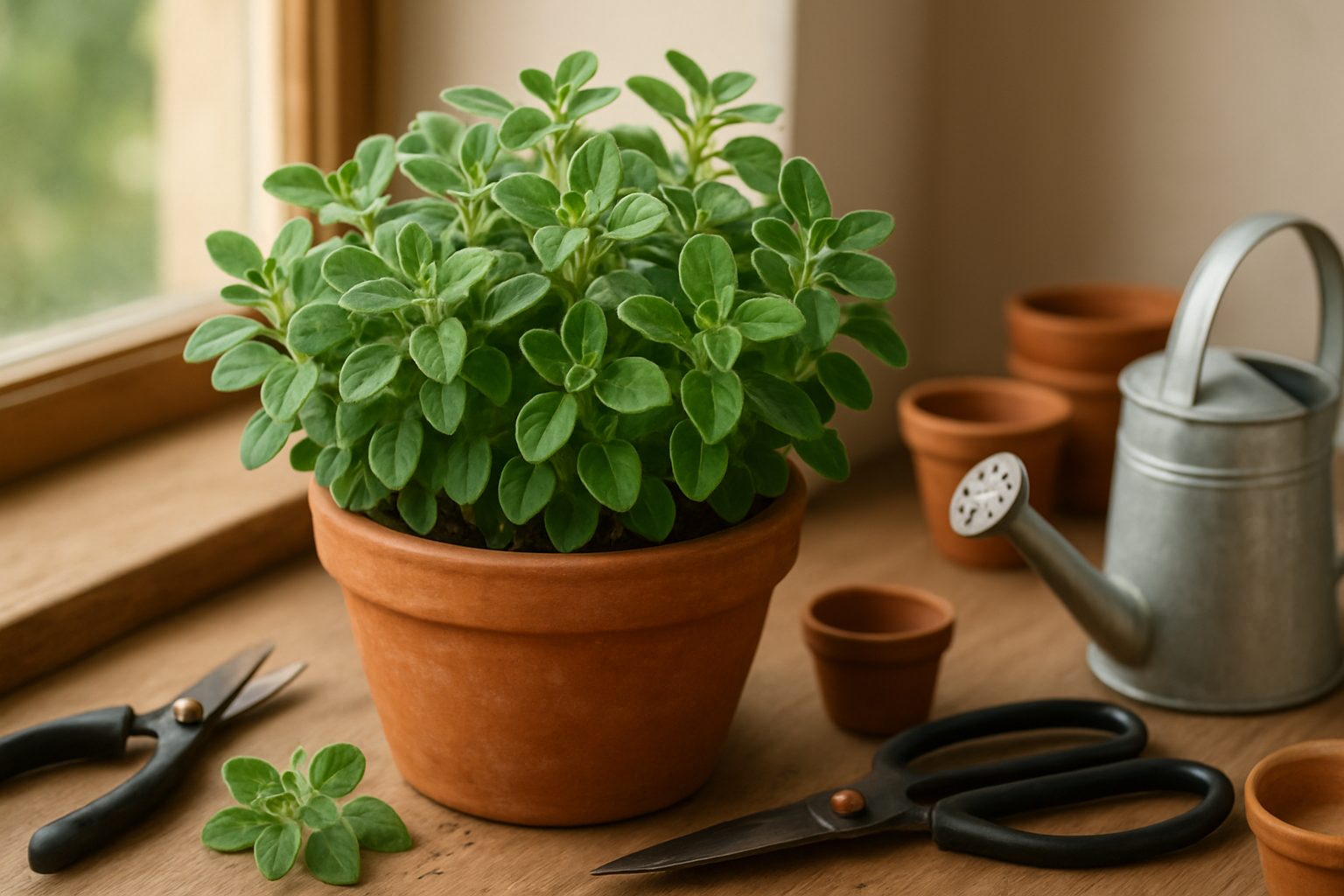Introduction
If you’ve ever wondered whether you can regrow Mexican oregano from that store-bought bunch, you’re not alone. Mexican oregano (Lippia graveolens) has a citrusy, slightly peppery kick that sets it apart from its Mediterranean cousin, making it a must-have herb in authentic Latin American cooking. Home cooks and gardeners alike love its bold flavor and the way it brings homemade salsas, stews, and grilled dishes to life.
The good news? With a bit of know-how, it’s absolutely possible to regrow Mexican oregano at home—saving you trips to the market and ensuring you always have fresh, fragrant leaves within arm’s reach. In this guide, we’ll explore the best ways to propagate Mexican oregano, from cuttings to seeds, and share simple but effective tips for nurturing healthy, thriving plants.
Whether you’re new to indoor herb gardening or looking to expand your outdoor beds, you’ll learn which conditions Mexican oregano loves and how to encourage bushy, lush growth. Say goodbye to store-bought bunches going limp in your fridge—regrow Mexican oregano and enjoy its delicious zest straight from your garden or windowsill!
Understanding Mexican Oregano
Mexican oregano, known botanically as Lippia graveolens, is a vibrant, aromatic herb native to Mexico and Central America. Unlike Mediterranean oregano, which belongs to the mint family (Origanum vulgare), Mexican oregano is part of the verbena family. This gives it a more robust, citrusy flavor profile with subtle notes of lemon and licorice. Its leaves are small, oval, and slightly fuzzy, delivering a stronger punch compared to the milder, sweeter Mediterranean variety.
In the kitchen, Mexican oregano is a staple in Latin American cooking, enhancing the depth of dishes like pozole, carne asada, and salsas. It pairs exceptionally well with chili peppers, cumin, and garlic, adding earthy complexity to both meat and vegetarian recipes.
Beyond its culinary role, Mexican oregano is cherished in traditional medicine for its potential health benefits. It’s rich in antioxidants and has natural antimicrobial properties. Herbal teas brewed from its leaves are often used to soothe coughs and digestive issues.
For gardeners, Mexican oregano is an adaptable, low-maintenance plant that thrives in dry, sunny environments. It’s drought-tolerant and withstands high heat, making it a great pick for gardens in arid or Mediterranean climates. Whether you have a sunny windowsill or a well-drained outdoor bed, you can easily grow Mexican oregano in pots or directly in the ground. Regular trimming not only encourages lush growth but also provides you with a fresh, ongoing harvest.
Whether you’re seeking bold flavors or natural remedies, Mexican oregano can be a practical and resilient addition to your kitchen and garden.
Getting Started

Before you dive into propagating Mexican oregano, make sure you’re equipped with the right tools and supplies. You’ll need small containers (like nursery pots or recycled yogurt cups with drainage holes), clean pruning shears or scissors for precise snipping, loose and well-draining potting soil, and optionally, some rooting hormone to boost your cuttings’ chances of success.
A spray bottle or a watering can with a fine spout will help you keep the soil gently moist but never soggy—a key to healthy root development.
When it comes to picking plants to take seeds or cuttings from, always look for robust, disease-free Mexican oregano. Healthy parent plants have vibrant color, no signs of pests (check under leaves for bugs or sticky residue), and stems that aren’t woody or brittle.
If you’re growing from seed, purchase from reputable nurseries or trusted online sources. Some good starting points are Rare Seeds, True Leaf Market, or your local garden center.
If you know a friend or neighbor growing Mexican oregano, ask for a cutting. Inspect it for plump, green growth and no wilted leaves.
Remember, a strong start with quality tools and healthy parent material is the secret to successful propagation down the road.
Propagating Mexican Oregano

Propagating Mexican oregano (Poliomintha longiflora) by stem cuttings is an easy way to multiply your plant, and you have two effective options: water or soil.
Water Propagation
Start by snipping a 4-6 inch section of healthy, non-flowering stem just below a leaf node, removing leaves from the bottom half. Place the cutting in a clear glass of room-temperature water, making sure no leaves are submerged to prevent rot. Set the glass in bright, indirect light and refresh the water every few days. Roots usually begin forming within two weeks. Once roots are a couple of inches long, transfer the cutting to potting soil.
Soil Propagation
Use a light, well-draining mix—combine equal parts cactus soil and perlite, or simply add perlite to regular potting mix. Take your cutting as described above, dip the cut end into rooting hormone powder for a boost, then insert it about an inch deep in pre-moistened soil. Cover the pot loosely with a clear plastic bag to help retain humidity, making sure the plastic doesn’t touch the cutting.
Keep the soil lightly moist but never soggy, as wet conditions invite rot. Place pots in bright, indirect light and gently tug after two weeks to check for root resistance—a sign roots are growing.
Troubleshooting
- If you notice blackened stems or mushy bases, these indicate rot; cut away any affected sections and reduce watering.
- For sluggish rooting, ensure your mix is airy, move the pot to a warmer spot, and make sure your cuttings come from healthy, vigorous plants.
Consistent warmth, moderate humidity, and patience are key—don’t rush to transplant until roots are robust. Whether rooting in water or soil, never overcrowd pots and use small containers to prevent excess moisture retention. Regularly mist soil-propagated cuttings with a spray bottle, but avoid letting water pool at the base.
Following these steps will help you cultivate healthy new Mexican oregano plants ready to thrive in your herb garden.
Planting and Growing
Getting your plants off to a strong start begins with choosing the right spot and soil. Most vegetables, herbs, and flowering plants thrive in loamy, well-draining soil rich in organic matter—think compost, aged manure, or leaf mold. Before planting, loosen the soil to about a foot deep to encourage healthy root growth. If your garden soil is heavy clay or too sandy, amend it with compost for better texture and nutrients.
Sunlight is another key player: most edible and ornamental plants need at least 6-8 hours of direct sun per day, so select a site that isn’t shaded by buildings or large trees. When planting, give each plant enough space, as crowding can stunt growth and increase disease risk—for example, tomatoes need about two feet between plants, while lettuce and herbs can be tucked a bit closer.
Watering is crucial, especially for young plants. Aim to keep the soil consistently moist but never soggy; overwatering can suffocate roots and encourage fungal issues. Always check the top inch of soil before watering, and early morning is ideal to minimize evaporation and prevent leaf diseases.
Good drainage is essential for nearly all plants—raised beds or mounded rows work well in areas where water tends to pool. To keep weeds down and conserve moisture, add a layer of organic mulch like straw, shredded bark, or grass clippings around your plants. Mulch also helps moderate soil temperature and slowly feeds the soil as it breaks down.
Seasonal care includes applying a balanced, slow-release fertilizer in spring or using diluted liquid feed every few weeks during the peak growing season, depending on your plants’ nutritional needs. Keep an eye out for early signs of pests like aphids or slugs—regularly inspect leaves and use barriers, traps, or natural predators where possible instead of harsh chemicals. When seasons change, especially in colder climates, cover tender plants with row covers or bring containers indoors before the first frost.
Container Gardening
Container gardening is perfect for patios, balconies, or small spaces and is especially useful in challenging climates. Containers let you control soil mix and drainage, and you can move pots to chase the sun or escape frosty nights. Just make sure containers are large enough for root development and have drainage holes.
In-Ground Planting and Climate Considerations
In-ground planting gives roots more room to spread but requires more attention to local soil quality and climate conditions. In very hot or cold regions, native or climate-adapted species generally perform best. Thoughtful placement—as well as some trial and error—can make all the difference for a flourishing garden.
Maintenance
Pruning and training your oregano plant are key to keeping it healthy, bushy, and productive. Start by pinching off the growing tips once the plant is about four inches tall—this encourages branching and helps it grow more leaves instead of becoming leggy.
Throughout the growing season, use clean scissors to trim back stems by about a third, mainly above a pair of leaves or a branching point. This stimulates new shoots and helps the plant fill out. If you notice any flowers forming, snip them off early—when oregano flowers, the leaves can become bitter, and the plant’s energy shifts away from leaf production.
Regular harvesting acts like pruning, too. The best time to pick oregano is right before the plant blooms, usually late spring through summer, when the leaves are full of oils and flavor. Harvest in the morning, after the dew dries but before the sun gets too hot, for the most aromatic results. Cut stems cleanly, leaving at least one-third of the plant so it can regrow.
After harvesting, you can preserve oregano by drying, freezing, or storing it in oil.
- Drying: Bundle the stems and hang them upside down in a cool, airy spot. Once the leaves are crispy, strip them from the stems and store in an airtight jar away from light.
- Freezing: Chop fresh leaves and pack them into ice cube trays with a bit of water or olive oil. These flavor bombs are perfect for tossing into soups and sauces.
- Storing in oil: Submerge clean, dry leaves in olive oil and refrigerate. Use it quickly and keep it cold to avoid spoilage.
With regular pruning and proper harvesting, your oregano will thrive season after season. A few simple preservation tricks will ensure you enjoy its rich flavor year-round.
Common Problems and Solutions
Dealing with pests and diseases is a routine part of gardening, but catching issues early makes all the difference. Common pests like aphids, spider mites, and whiteflies often cluster on leaves or stems, leaving sticky residue, speckled foliage, or webbing in their wake.
For organic control, spray affected areas with a mix of mild soap and water, or introduce beneficial insects like ladybugs to manage populations naturally. Chemical options, such as neem oil or insecticidal soap, are effective but always follow label instructions to protect pollinators and prevent residue on edibles.
Fungal diseases like powdery mildew and blight reveal themselves through white powdery patches, dark spots, or wilting. To combat these, remove infected leaves promptly, ensure good air circulation, and water at the base of plants rather than overhead. Copper-based fungicides offer a chemical line of defense for persistent problems.
Keep an eye out for signs of plant stress — yellowing leaves can signal overwatering, nutrient deficiency, or root trouble, while stunted growth could point to compacted soil or too little sunlight. Remedy these issues by checking drainage, adjusting your watering routine, and ensuring your plants get at least six hours of sunlight per day.
If herbs or vegetables lack their usual punch of flavor, assess whether they’re receiving rich, well-balanced nutrients and harvest them at the right stage — often, picking just before flowering yields the most robust taste.
Keeping garden tools clean, rotating crops each season, and staying vigilant for subtle changes helps troubleshoot problems quickly, safeguard your harvest, and keep your plants thriving.
How to Propagate and Care for Mexican Oregano
Many gardeners wonder about the best way to propagate Mexican oregano, and the good news is it’s easier than you might think. You can start new plants from stem cuttings—just snip a healthy, non-flowering stem about four inches long and remove the lower leaves before planting it in moist soil. Keep it in a warm, bright spot and water lightly until roots form.
Spring and early summer are ideal for propagation, as the plant is entering its active growing season and will establish quickly.
For ongoing growth, Mexican oregano thrives in full sun and well-draining soil. Water the plant when the top inch of soil feels dry, but avoid overwatering, as soggy conditions can lead to root rot. Pruning regularly not only encourages bushier growth but also provides a fresh supply of leaves for kitchen use.
Culinary Uses
For culinary lovers, Mexican oregano’s robust flavor is a staple in traditional dishes like pozole, taco fillings, and salsas, but it’s also delicious sprinkled over roasted veggies or infused in oils for a fragrant twist. Try drying bunches for later use or mixing fresh leaves into marinades for grilled meats.
In short, with the right care and a few smart tips—like propagating early, placing in sunny spots, and keeping up with light pruning—you’ll have a thriving Mexican oregano plant that’s ready to enhance your meals and add vibrant greenery to your home or garden.
Conclusion
Growing Mexican oregano at home is both rewarding and straightforward if you follow a few key steps. Start by selecting healthy cuttings or seeds, ensuring well-draining soil, and choosing a sunny spot with plenty of warmth. Remember to water sparingly, as Mexican oregano prefers to dry out between waterings.
Regular trimming not only encourages a bushier plant but also supplies you with fresh leaves for your kitchen. Don’t be afraid to experiment with indoor and outdoor placements—every home environment is different, and you might discover your oregano thrives in a spot you hadn’t expected.
If you encounter issues like yellowing leaves or slow growth, try adjusting light and water levels before seeking more advanced fixes. Most importantly, share your progress and discoveries with fellow gardeners; you might inspire others or pick up helpful tips along the way.
For deeper dives, websites like gardening forums, university cooperative extensions, or YouTube channels dedicated to herb gardening can offer in-depth advice and visual guides. With a bit of patience and curiosity, you’ll enjoy not just the process but also the fresh, aromatic harvests that follow.
